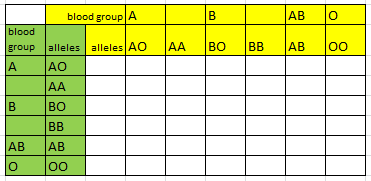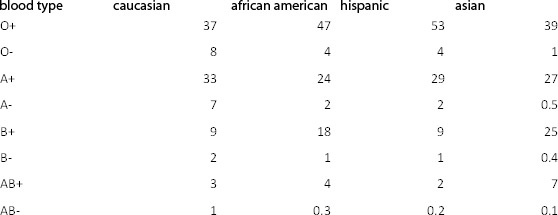Batch 2 - Class 261 - Math in Genetics
HTML Content
Zoom: send meeting Id and password
Start recording
Preclass Exercise:
Admiral Perry is hiking to an outpost in Alaska that is 6 days from the town of Shungnak. One hiker can carry only enough food and water for 4 days. What's the smallest number of assistants it would take to allow Perry to make it to the outpost?
- (Answer) Let the Admiral leave with 2 assistants. Once they have walked for 1 day, one assistant may return with 1 day's worth of food and leave the Admiral and his other assistant with enough for 4 days each. The next day, the second assistant may return safely with 2 day's worth of supplies leaving one day's worth to Perry who now has enough for the 4 remaining days.
- How many days would it take him if he was all by himself?
- Answer: 12 days instead of 6, if we assume that food can be dropped along the way, hidden from wild beasts. Perry starts carrying 4 units (4u=4 days' worth of supplies) walks 1d, leaves 2u in a stash and returns to Shungnak. He does the same thing again so there are now 4u in the stash. He may now start his final journey with 4u: he walks 1d (using 1u) and picks up 1u at the stash (3u remain), so he may carry 4u, walk another day and leave 2u in a second stash, before returning to the first stash where he picks up the remaining 3u. He walks one day to arrive with 2u to the second stash. He picks up the 2u that were stored there to walk away with 4u, which is enough to complete the trip (since the second stash is 4d away from the goal).
Attendance: Advay, Raghav, Ayush, Aneesh, Shikhar, Rohan, Mihir, Vivaan, Aarkin, Anshi, SiddharthT
Class Notes: (Repeat from class 63)
- What happens if you combine yellow color with blue color?
- What happens if you cross-pollinate yellow flowers with blue flowers?
- Lets see an actual experiment done by Gregor Mendel around 1860s
- Mendel took yellow and green peas and cross-pollinated them
- What would you expect?
- This is what Mendel saw
.png)
- Can you explain this?
- Lets see what happened in next generation (might have to explain self-pollination, as against cross-pollination which was done initially)
.png)
- Why are we not getting mix of green and yellow color? (Kids should get to the point that there are different elements which lead to yellow and green color, and they don't combine)
- Just like if two kids are shouting, you dont get a mix of voices, but two distinct voices
- But why are all in first generation yellow? - Introduce the notion that yellow might be overpowering green
- Just like your younger sibling who always shouts harder than you
- And why do we suddenly see a green come back in second generation, when there were no greens in first generation?
- Something was still there not getting expressed
- Introduce the notion of two genes per flower for color, one from each parent, and of dominance
- Lets try to recreate the above pattern basis this
.png)
- Interestingly, Mendel observed the same thing for other traits
- Where could we see this principle in human beings?
- Lets examine an application to diseases - Cystic Fibrosis is causes by a recessive allele (explain).
- Explain notion of a carrier, a non-carrier healthy, and someone expressing the disorder.
- Let kids work on what happens for different combination of parents
- How can we use this to predict probability of a child getting a disorder?
- How about a disorder which may be caused by a dominant allele? (such as Huntington disease)
- Intermediate Expression - all genes don't express as dominant or recessive. Sometimes intermediate expressions occur, such as in pitch of human males
- Additive Expression - Sometimes AA is more expressive than Aa, such as in color of human skin
- Some characteristics are polygenic - i.e. multiple genes effect the feature - eg: height of human beings, color of skin
- Skin color is controlled by 4 genes. Let us work with two and assume their effect is additive
- What are the different skin colors we can get?
| 1. | flower color is purple or white | 5. | seed color is yellow or green |
| 2. | flower position is axil or terminal | 6. | pod shape is inflated or constricted |
| 3. | stem length is long or short | 7. | pod color is yellow or green |
| 4. | seed shape is round or wrinkled |
.png)
- How many would we get with four genes? - 17 (2^n+1)
- Is it possible for children to be lighter or darker than both parents? Lets work this out
.png)
- Human Blood Group - Single gene, two alleles, but each can have three values - A, B, or O (O is just absence of A and B). A and B are dominant over O, but if both A and B are present then both express into AB group. Lets draw a chart of what can happen in inheritance

- Remember, all genes are not equally probable (50-50). It depends on evolution - for example hot climates prefer dark skins (melanin protects against UV A/B radiation), and cold climates prefer lighter skin (With lack of UV B in cold areas, low melanin to enable absorption of UV B, so that Vitamin D can be produced)

Homework:
- (Geoffrey - 143) Three dutchmen and their wives go shopping hogs, and each buys as many hogs as he or she pays for each hog. Each husband spends Rs 63 more than respective wife. Husbands are Hendrick, Elas and Cornelius. Wives are Gurtrun, Katrun and Anna. Hendrick buys 23 more hogs than Katrun, while Elas buys 11 more than Gurtrun. What are the names of each man's wife?
- Answer: Pairs are 32/31, 12/9, and 8/1 - we can now see integers that differ by 23 and 11. So its Hendrick-Anna, Elas-Katrun and Cornelius-Gurtrun
References:
Mathematical Puzzles, Geoffrey Mott-Smith